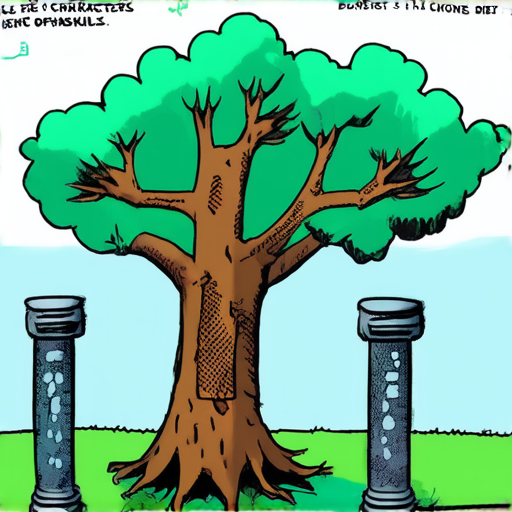Understanding character development is crucial for anyone looking to craft believable and relatable characters in their stories, whether it’s a novel, film, or even a personal narrative. At its core, character development refers to the process of creating and refining a character’s personality, traits, and behaviors over time, often through a series of challenges and experiences that shape who they become. But what exactly does this process entail, and how can we apply it in our own lives? In this comprehensive guide, we’ll delve into the different types, methods, and stages of character development, exploring everything from the basics of creating a well-rounded character to the nuances of character growth and transformation.

Types of Character Development
I’ve always been fascinated by how authors bring characters to life, making them relatable and memorable. In literature, there are four primary types of character development that every writer should know.
- Dynamic Characters: These characters undergo significant changes throughout the story, often due to their experiences and interactions with others. Think of characters like Ebenezer Scrooge in Charles Dickens’ “A Christmas Carol,” who transforms from a miserly old man to a kind-hearted philanthropist.
- Unlike dynamic characters, static characters remain unchanged throughout the story. They might have a fixed personality, motivation, or role, but they don’t evolve or grow. Consider characters like Sherlock Holmes’ trusty sidekick, Dr. Watson, who remains loyal and observant but doesn’t change much.
- Rounded Characters: Rounded characters are complex and multi-dimensional, with rich inner lives and nuanced motivations. They can be both likable and flawed, making them more believable and engaging. Take, for example, Holden Caulfield from J.D. Salinger’s “The Catcher in the Rye,” whose struggles with identity and belonging make him a timeless classic.
- Flat Characters: Flat characters lack depth and complexity, serving primarily as plot devices or foils to rounder characters. While they might have some defining traits, they don’t drive the story forward or undergo significant development. Think of characters like the villainous Nurse Ratched from Ken Kesey’s “One Flew Over the Cuckoo’s Nest,” who represents the oppressive forces against the protagonist.
As a writer, understanding these character development types can help you create more believable, engaging, and memorable characters. By crafting well-rounded characters, you’ll draw readers into your story and keep them invested until the very end.
Character Development Methods
I’ve often been asked about the most effective ways to develop characters in my stories, and I’m happy to share my expertise with you.
-
Physical Description
A character’s physical appearance can reveal a lot about their personality, background, and motivations. Think about how a character’s height, weight, hair color, and style can influence how others perceive them.
-
Action
A character’s actions speak louder than words. Observe how they interact with others, make decisions, and respond to challenges. Their actions can reveal their values, goals, and conflicts.
-
Inner Thoughts
Characters’ inner monologues can provide valuable insight into their thoughts, feelings, and desires. Use dialogue, narration, or stream-of-consciousness techniques to bring their inner world to life.
-
Reactions
How characters react to situations and events can reveal their emotional intelligence, empathy, and resilience. Pay attention to their body language, tone of voice, and verbal cues.
-
Speech
A character’s dialogue can convey their personality, background, and relationships. Listen to their tone, vocabulary, and syntax to understand their unique voice and perspective.
By incorporating these methods into your storytelling, you’ll be able to create well-rounded, relatable, and memorable characters that captivate your audience.
Additional Tips:
- Consistency is key: Make sure your character’s traits and behaviors align with their backstory and personality.
- Variety is essential: Mix and match different methods to keep your character development fresh and engaging.
- Subtlety is powerful: Don’t hit your readers over the head with too much information – let them infer and interpret your character’s traits.

Understanding Character Development in Kenyan Culture
Kenyans often refer to challenging experiences as “kupigwa” which translates to character development.
-
This concept emphasizes personal growth and resilience in the face of adversity.
-
It highlights the importance of developing strong character traits such as perseverance, courage, and determination.
-
In Kenyan culture, character development is seen as a vital aspect of personal and societal progress.
The Role of Adversity in Character Development
Adverse situations can serve as catalysts for character development, forcing individuals to confront their limitations and push beyond their comfort zones.
-
Through these experiences, individuals can develop essential life skills such as problem-solving, critical thinking, and emotional intelligence.
-
Character development enables individuals to navigate complex social dynamics, build stronger relationships, and contribute positively to their communities.
-
By embracing challenges and learning from failures, individuals can cultivate a growth mindset, fostering continuous self-improvement and personal growth.
Embracing Character Development in Everyday Life
While character development may seem daunting, it can be achieved through intentional effort and dedication.
-
Individuals can start by setting realistic goals, breaking down larger objectives into manageable tasks, and celebrating small victories along the way.
-
Practicing mindfulness, self-reflection, and self-awareness can help individuals identify areas for improvement and develop strategies for overcoming obstacles.
-
Surrounding oneself with supportive networks, mentors, and role models can provide valuable guidance, encouragement, and accountability.

The Five Stages of Character Development
As a writer, I’ve found that developing well-rounded characters is crucial to crafting engaging stories.
-
Stage 1: Introduction and Setup
This stage involves introducing the character and setting the foundation for their personality, backstory, and motivations.
- Create a rich history for your character, including their family, upbringing, and significant life events.
- Determine their core values, goals, and conflicts to drive the plot forward.
- Establish their physical appearance, speech patterns, and mannerisms to bring them to life.
Stage 2: Conflict and Growth
In this stage, the character faces challenges and obstacles that test their resolve and force them to grow.
- Craft scenarios that push the character out of their comfort zone and force them to adapt.
- Show how the character responds to adversity, revealing their strengths and weaknesses.
Stage 3: Midpoint and Turning Point
At this stage, the character reaches a critical juncture where they must make a choice that will impact the rest of the story.
- Create a turning point that raises the stakes and creates tension.
- Show how the character grapples with their decision and its consequences.
Stage 4: Climax and Resolution
In the final stage, the character faces their greatest challenge yet, and the outcome determines the fate of the story.
- Create a climactic confrontation that tests the character’s abilities and resolves the central conflict.
- Show how the character emerges victorious or defeated, and what they learn from the experience.
Stage 5: Reflection and Legacy
In the final stage, the character reflects on their journey and the lessons they’ve learned, leaving a lasting impact on the story and its readers.
- Show how the character has grown and changed throughout their journey.
The Four Pillars of Character Development
In my work as a writer and educator, I’ve come to understand the importance of character development in shaping individuals into capable and compassionate leaders.
-
Learning
Learning is the foundation upon which character development is built. It encompasses the acquisition of knowledge, skills, and experiences that enable us to grow and adapt in an ever-changing world.
- Acquiring knowledge through formal education, self-study, or hands-on experience
- Developing essential life skills, such as communication, problem-solving, and critical thinking
- Cultivating emotional intelligence, empathy, and self-awareness
-
Leadership
Effective leadership is crucial in bringing out the best in others and achieving collective goals. It involves inspiring, motivating, and guiding individuals towards a shared vision.
- Developing strong communication and interpersonal skills
- Fostering a positive and inclusive team culture
- Making informed decisions that balance individual needs with collective interests
-
Service
Service is about giving back to others and contributing to the greater good. It helps us develop a sense of purpose, responsibility, and compassion.
- Volunteering time and resources to support causes we care about
- Engaging in acts of kindness and generosity towards others
- Promoting social justice and advocating for marginalized communities
-
Participation
Participation is about being actively engaged in activities that bring us joy, challenge us to grow, and connect us with others.
- Joining clubs, organizations, or teams that align with our interests
- Taking on new challenges and stepping outside our comfort zones
- Nurturing meaningful relationships and building a supportive community
By embracing these four pillars of character development – learning, leadership, service, and participation – we can cultivate the qualities necessary to become confident, empathetic, and effective individuals who make a positive impact in the world.

The 5 Basic Stages of Development
As a writer and storyteller, I’ve always been fascinated by human growth and development.
-
Newborn Stage (0-3 months)
- Physical Development: Newborn babies develop their senses, motor skills, and reflexes during this stage.
- Cognitive Development: Infants begin to recognize familiar faces and sounds, laying the foundation for future cognitive abilities.
- Social and Emotional Development: Newborns start to form attachments with caregivers, which is essential for emotional development.
-
Infant Stage (4-11 months)
- Physical Development: Infants develop their gross motor skills, such as rolling over, sitting up, and crawling.
- Cognitive Development: Infants learn to problem-solve, understand cause-and-effect relationships, and develop memory.
- Social and Emotional Development: Infants become more attached to their caregivers and may exhibit separation anxiety.
-
Toddler Stage (1-3 years)
- Physical Development: Toddlers develop their fine motor skills, such as drawing and using utensils.
- Cognitive Development: Toddlers learn to communicate effectively, understand simple instructions, and demonstrate imagination.
- Social and Emotional Development: Toddlers assert their independence, test boundaries, and develop empathy towards others.
-
Preschool Stage (3-5 years)
- Physical Development: Preschoolers refine their gross and fine motor skills, such as running, jumping, and using scissors.
- Cognitive Development: Preschoolers develop their language skills, understand basic math concepts, and demonstrate creativity.
- Social and Emotional Development: Preschoolers learn to cooperate with others, take turns, and express emotions effectively.
-
School-Age Stage (6-12 years)
- Physical Development: School-age children develop their coordination, balance, and overall physical fitness.
- Cognitive Development: School-age children learn to read, write, and perform complex mathematical operations.
- Social and Emotional Development: School-age children develop friendships, learn to resolve conflicts, and demonstrate self-awareness.
This stage is characterized by rapid physical growth and development, as the baby adapts to life outside the womb.
During this stage, infants continue to grow physically, cognitively, and emotionally.
Toddlers experience significant physical, cognitive, and social-emotional growth during this stage.
Preschoolers continue to grow physically, cognitively, and socially-emotionally during this stage.
School-age children experience significant physical, cognitive, and social-emotional growth during this stage.

0 Comments